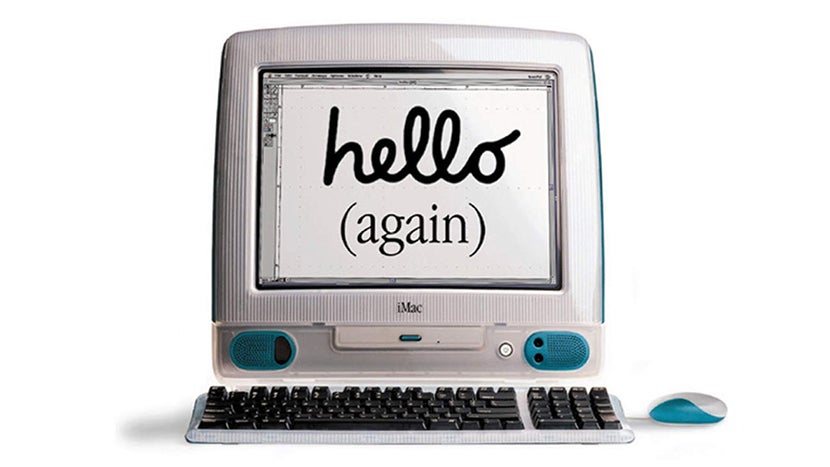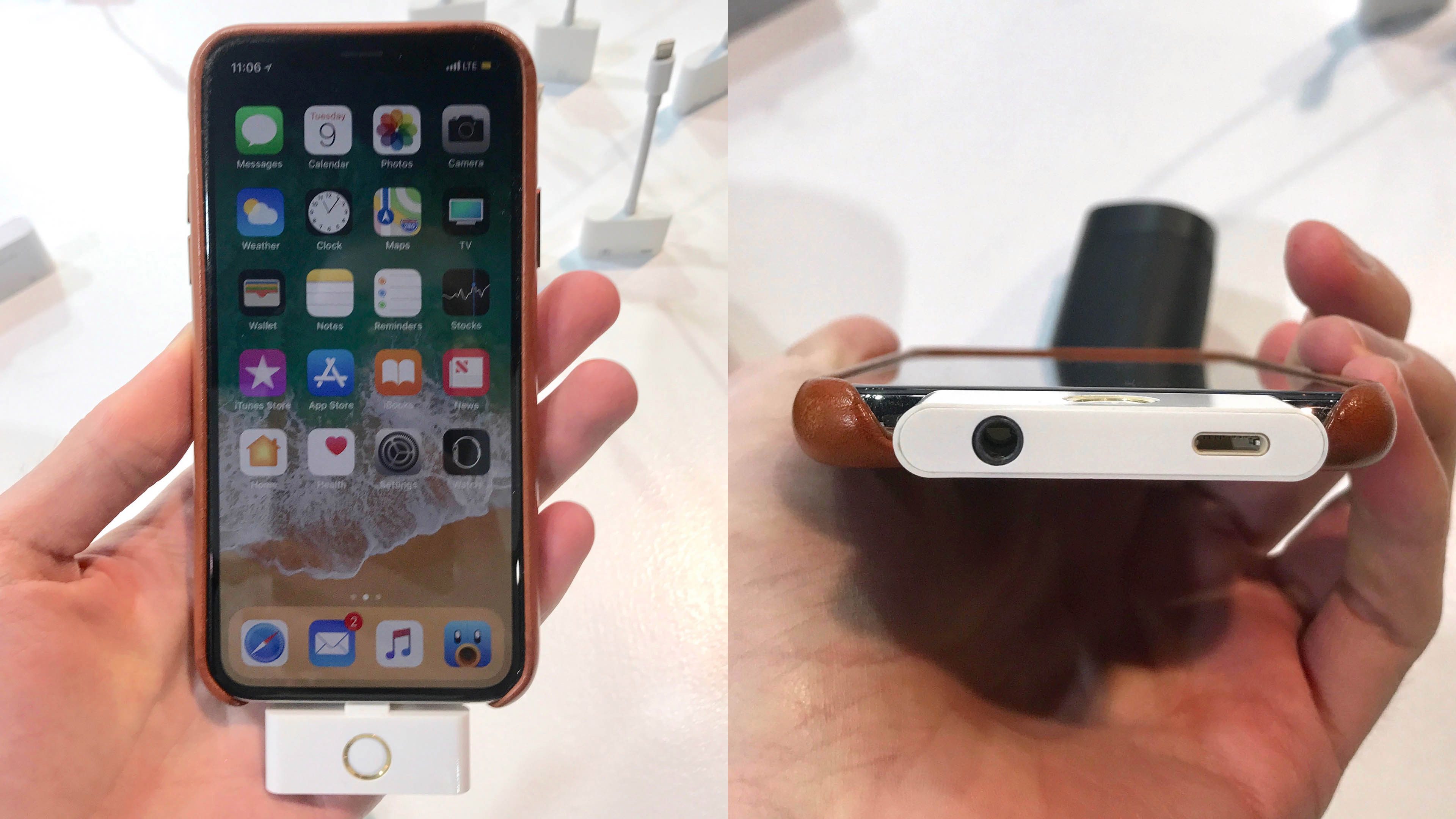The iPhone X home button "dongle" is bizarre: A journey through the strange world of aftermarket Apple accessories
This article may contain personal views and opinion from the author.

It's not easy to let go of things that we are convinced are important to us, in some way or another, be it for their perceived practical or sentimental values. This holds true for many things in life, even when it comes to otherwise inconsequential in the grand scheme of things material possessions, such as souvenirs, old photographs, and other mementos of days past. But the same also holds true not only for items of sentimental value—the merits of which can be defended by their owners, and rightfully so—but also for thoroughly utilitarian things as well. Things like, say, technologies.
And it's an interesting affair this, considering how technology is constantly moving forward—although it may not always seem like it to the impartial observer—which necessitates leaving things behind. This could be due to a variety of reasons, be it the existence of improved iterations of already existing technologies, or purely user experience-related concerns that often times force engineering and design teams to pull at each other's hairs until they achieve an equilibrium of sorts – a golden mean at the intersection of functionality, aesthetics, and user experience, where you have a "balanced" product, so to speak.
The hardships of future-proofing
Unfortunately, designing an innovative, functional, and easy to use product is a burdensome task, and one that doesn't always pays off in the end. We've all heard the phrase "ahead of it's time," tossed at products that curiously scratch that futurist itch possessed by many a tech lover, but at the same time fail to be practical enough at the time of their release. Such is the case, in my opinion, with the iPhone X and the complete removal of Touch ID in favor of Face ID. Don't get me wrong, the new system works, but seeing as how fingerprint scanning technologies are being taken in exciting new directions, Apple may have been too quick to ditch the tech this time.
And, you know, it's not like the two technologies can't co-exist, but Apple being Apple, it is very unlikely that we'll see fingerprint scanning make a return anytime soon, if ever, in an iPhone. This is nothing new for the company, really; in fact, it's been going on for decades, with the most recent example being the 3.5mm jack, against the removal of which people are still railing. But if we think back, as far as the late 90s, Apple has been spearheading innovation in tech, precisely by knowing when to kill old technologies, and it's been heavily, uncompromisingly criticized for this by people who just don't want to let go. This was the case when the iMac G3 hit store shelves in 1998 – it was the first major desktop computer to ditch the floppy disk drive in favor of an optical disc drive, and it did that at a time when 3½-inch disks were crazy popular. This, of course, proved an extremely controversial move on Apple's part, one that caused such raucous, that looking back at headlines from 1998 seems quite funny today. Especially when you fast forward a couple of years and everyone had given floppy disks the boot and had moved on to CDs and DVDs. The G3 also adopted the USB standard when it was still in its infancy.

iMac G3 - killer of the floppy disk
In 1998, this quirky computer stirred controversy by abandoning the 3½-inch floppy disk drive. This, of course, gave way to a plethora of external USB floppy disk drives by third parties. Not surprisingly, however, the G3 far outlived these add-ons when the industry was ready to move forward in a few years' time. The G3 also spawned the spectacularly flawed "hockey puck" mouse, but that's a topic for a different time and place.
The vast majority of these accessories are designed to appease people who don't own, and don't intend to own, Apple products
Short of a decade later, after it had already revolutionized personal audio with the iPod, Apple then "killed" phones with keyboards—a decision, which at the time seemed quite ludicrous to me, for practical purposes alone— and then went on to kill optical discs with the MacBook Air a couple of years later. This constant drive forward, perceived by many as something bad, has paved the way for an entire industry of aftermarket products, aimed at "mending" the company's "glaring omissions," as labeled by critics. And this market has been evolving in interesting ways, indeed, granting fertile soil for all sorts of products – from the somewhat useful to the outright bizarre. But most of these products have generally been of a corrective nature, designed to "fix" by going back, rather than improve by moving forward. In a sense, the vast majority of these accessories have been designed to appease people who don't own, and don't intend to own, Apple products, when the easiest fix for this is to, well, just continuenot owning Apple products.Complicating simplicity
There are so many options these days, so many offerings from such a wide spectrum of manufacturers, that there's just no point in blaming a company for sticking to its guns while at the same time buying its products, only to try to "fix" them later through a whole bunch of third-party accessories that, for the most part, serve only to bog down user experience. And it's not like Apple itself is completely exempt from this practice; the company has released its fair share of "dongles", as many people like to call them, to offer a sort of a middle ground for consumers who can't let go of a certain tech. But for all intents and purposes, these are nothing more than temporary crutches to be ditched in a year or two when the "bad" changes and exceptions become commonplace, as tech moves forward.

image source 9to5Mac
Such is the case with the iPhone X home button "dongle," unveiled at CES by a small Chinese company. Yes, it is finally upon us – a cheap-looking apparatus, built from glossy white plastic, and looking suspiciously like a skewed iPod Nano, the home button dongle connects through the iPhone X's Lightning port, offering users not only the dubious (we'll get to that in a moment) commodity of having a clickable hardware home button, but a 3.5mm headphone jack as well! All packaged neatly in this little, light-as-wafer add-on, vaguely reminiscent of Apple's design language from a decade ago, and completely ruining the portability of your mobile phone.

Ladies and gentlemen, the future!
Accepting that the perfect product does not exist
I just don't get why there is such great demand for products like this. Why buy an iPhone X if you so desperately need a physical home button? Why buy it if you can't live without the audio jack? This isn't even remotely useful. It isn't like buying a battery case that actually prolongs battery life, it's just being hung up – using a dongle to do stuff you can already do for the most part without it.
But hey, if some people are going to buy a Lightning to 3.5mm jack adapter, they might as well go all in and get this thing, right? Or, or, here's anоther idea – just buy a device that meets all your requirements out of the box, without the need to strangle it in cables. I know that's the conclusion I arrived at after owning many Apple products over the years.
Follow us on Google News













Things that are NOT allowed:
To help keep our community safe and free from spam, we apply temporary limits to newly created accounts: